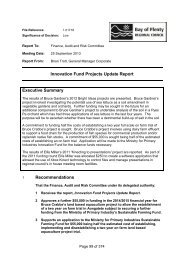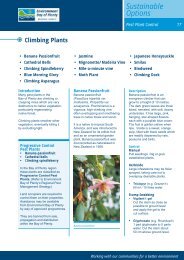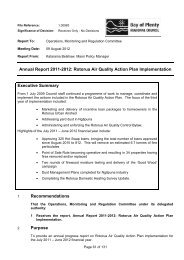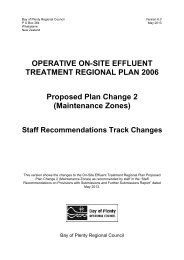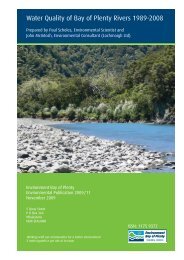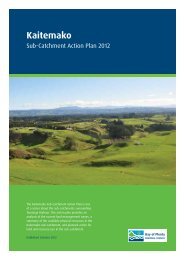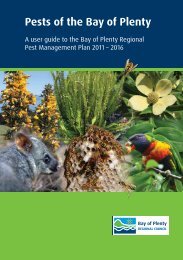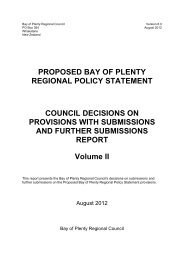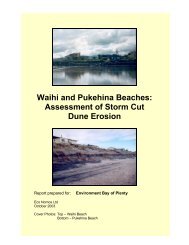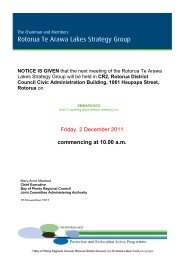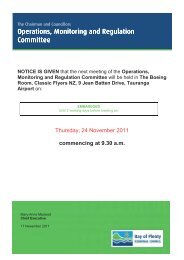Odour Threshold Investigation 2012 - Bay of Plenty Regional Council
Odour Threshold Investigation 2012 - Bay of Plenty Regional Council
Odour Threshold Investigation 2012 - Bay of Plenty Regional Council
You also want an ePaper? Increase the reach of your titles
YUMPU automatically turns print PDFs into web optimized ePapers that Google loves.
The original concept behind the testing methodology was one <strong>of</strong> using an untrained<br />
panel <strong>of</strong> participants. However as the tests progressed panellists became well<br />
aware <strong>of</strong> what was required and the random nature <strong>of</strong> the presentation <strong>of</strong> gas along<br />
with the appropriate conditioning <strong>of</strong> the gas (e.g. no obvious temperature difference<br />
between the two ports etc.) at each olfactometer port was critical. It is reasonable to<br />
assume that during the testing the threshold value per panellist may have<br />
decreased as panellists become more attuned to the odour. In Figure 7.15 first and<br />
last round results are presented for a number <strong>of</strong> the Whakatāne panellists (where<br />
each panellist attended three sessions) there is visual evidence that some <strong>of</strong> the<br />
panellists are exhibiting this downward trend. There are however a number that<br />
show a trend in the opposite direction. No further analysis <strong>of</strong> panellist behaviour<br />
over sessions is undertaken at this time as a more rigorous and tailored<br />
methodology would be required to check the hypothesis <strong>of</strong> changes per panellist<br />
over sessions.<br />
Figure 7.15<br />
Trends per panellist by comparing first and last round results.<br />
NZAAQ 7 µg/m 3 guideline analysis<br />
There is also the ability to investigate the percentages <strong>of</strong> the dataset which are<br />
below or above a value(s) <strong>of</strong> interest. For this exercise a value <strong>of</strong> 7 µg/m 3 has been<br />
chosen. With the plots shown in Figure 7.16 percentage results for any value <strong>of</strong><br />
interest can be easily obtained. The chosen 7 µg/m 3 represents the current MfE<br />
guideline for odour annoyance.<br />
The percentage detection results show that most panellists in the Whakatāne and<br />
Rotorua groups are able to recognise the 7 µg/m 3 concentration, with >95% <strong>of</strong> the<br />
recorded detection values below this guideline. The Rotorua plot shows a slightly<br />
lower percentage <strong>of</strong> values at which this guideline was met. The third plot shows the<br />
results for the periods <strong>of</strong> testing in Rotorua where elevated ambient H 2 S<br />
46 Environmental Publication <strong>2012</strong>/06–A review <strong>of</strong> odour properties <strong>of</strong> H 2 S <strong>Odour</strong> <strong>Threshold</strong> <strong>Investigation</strong> <strong>2012</strong>



